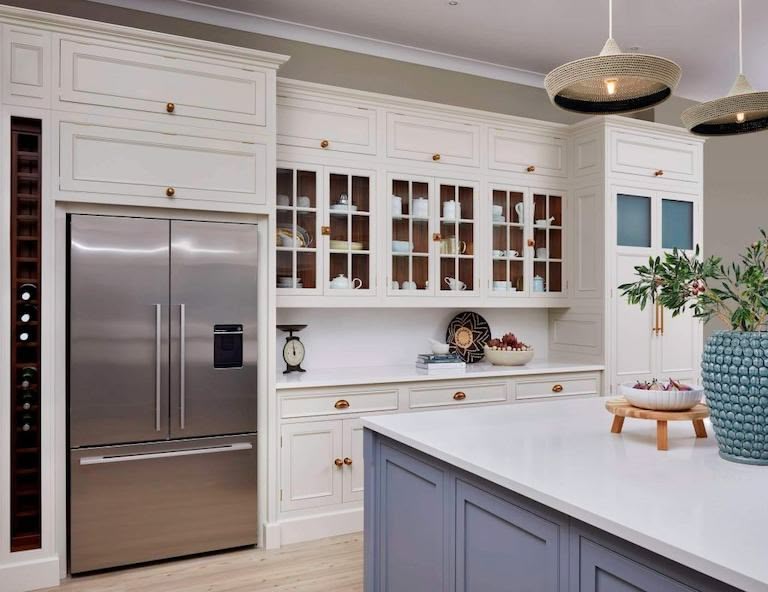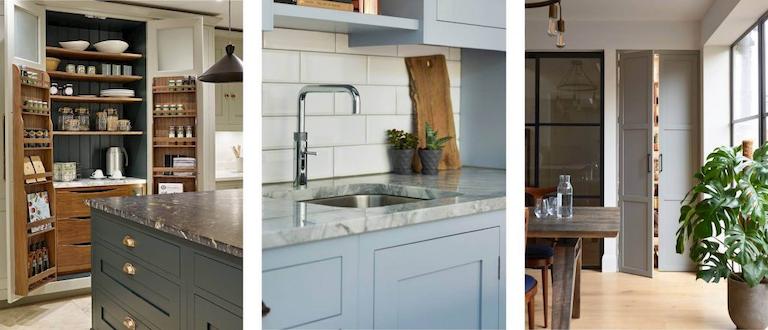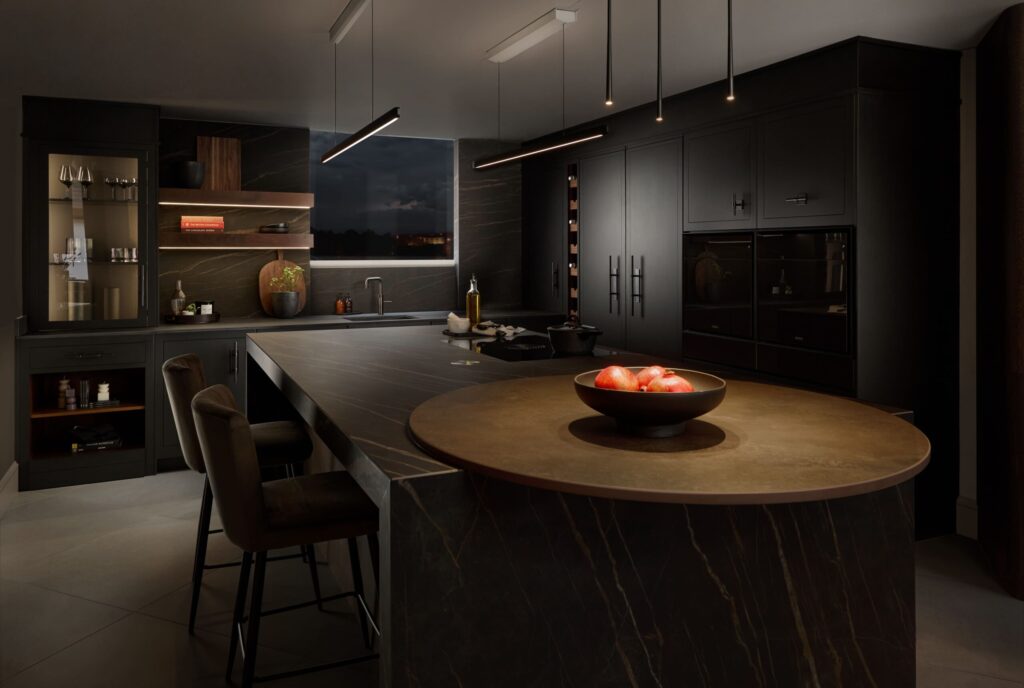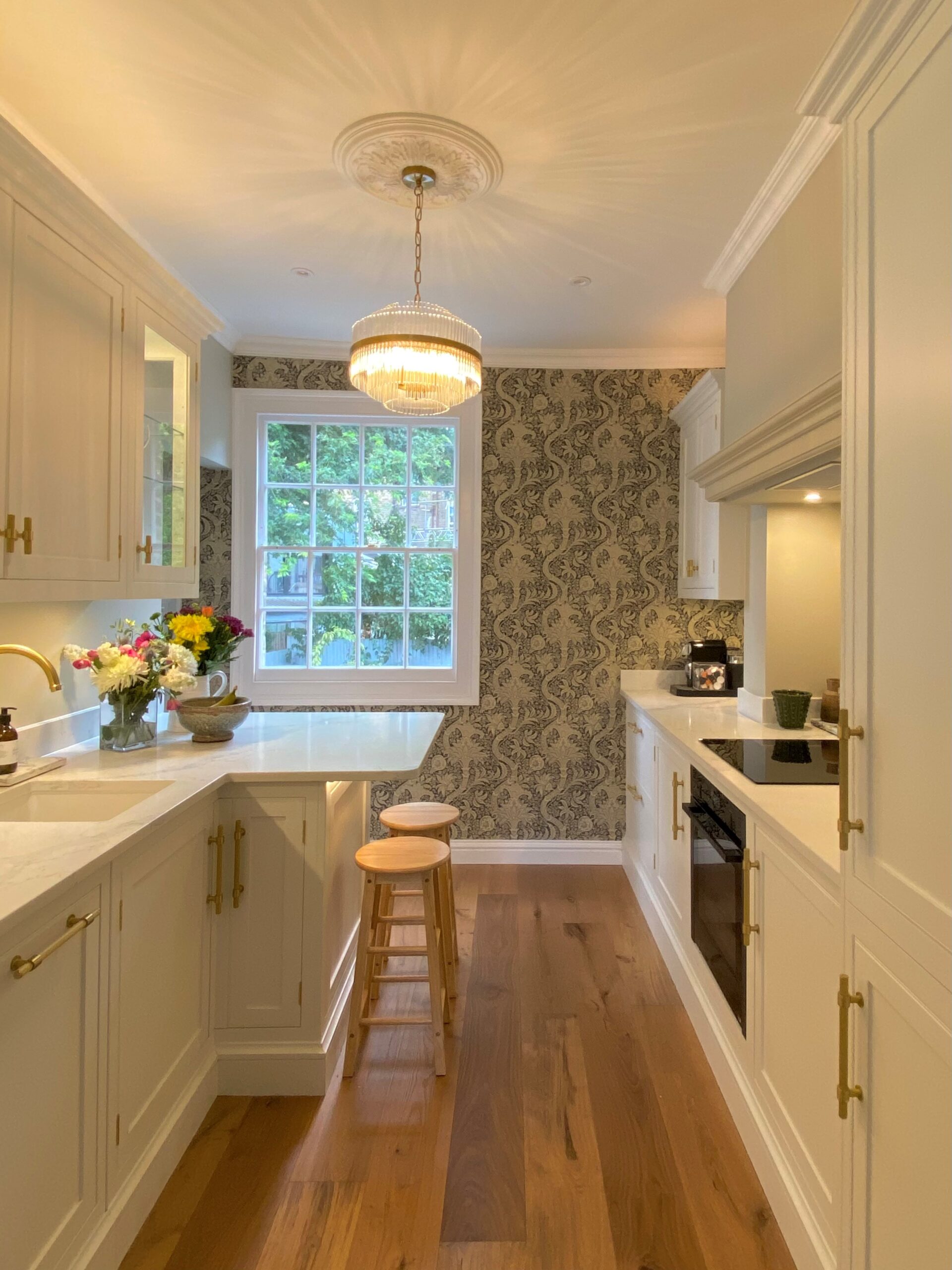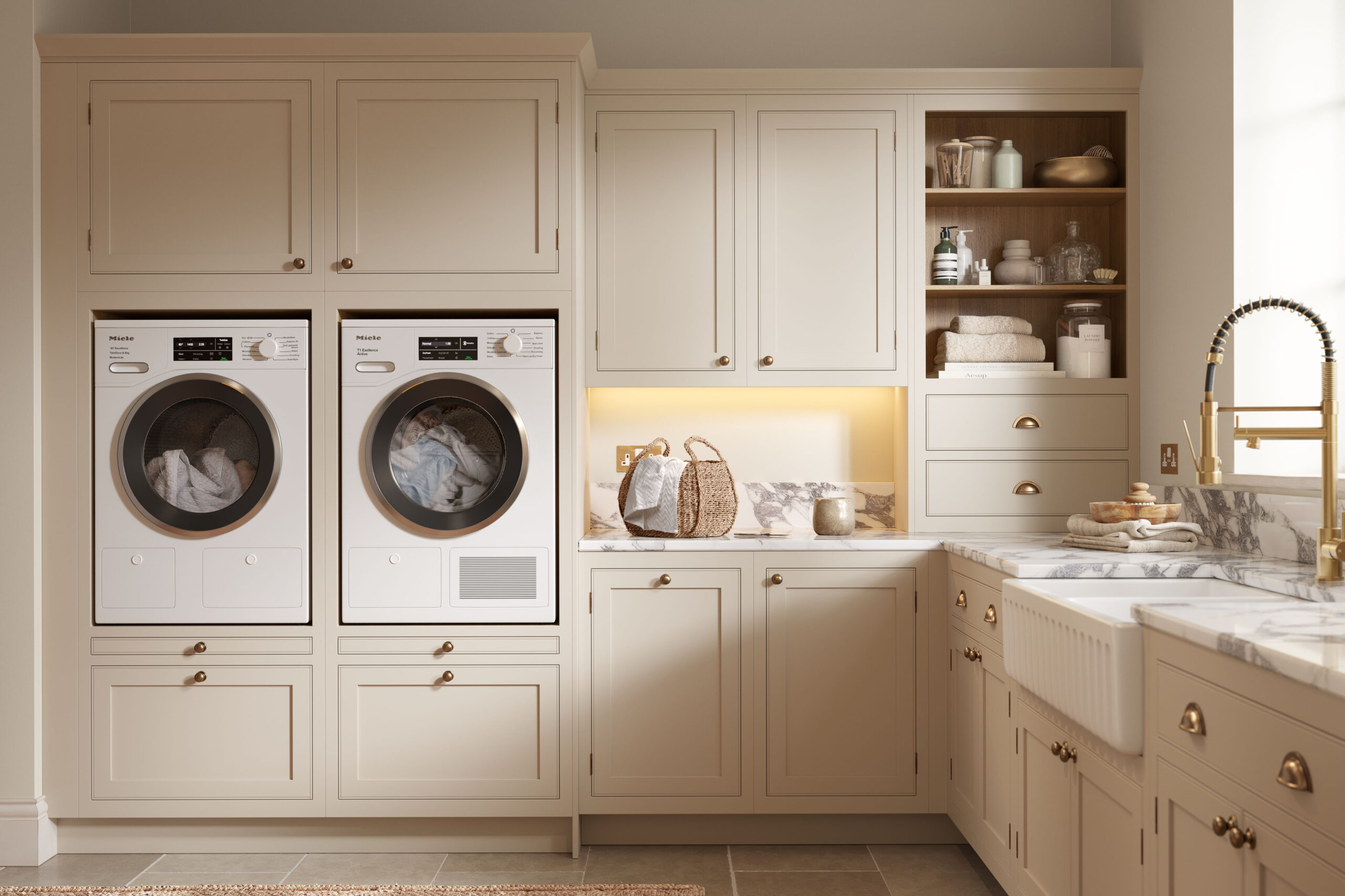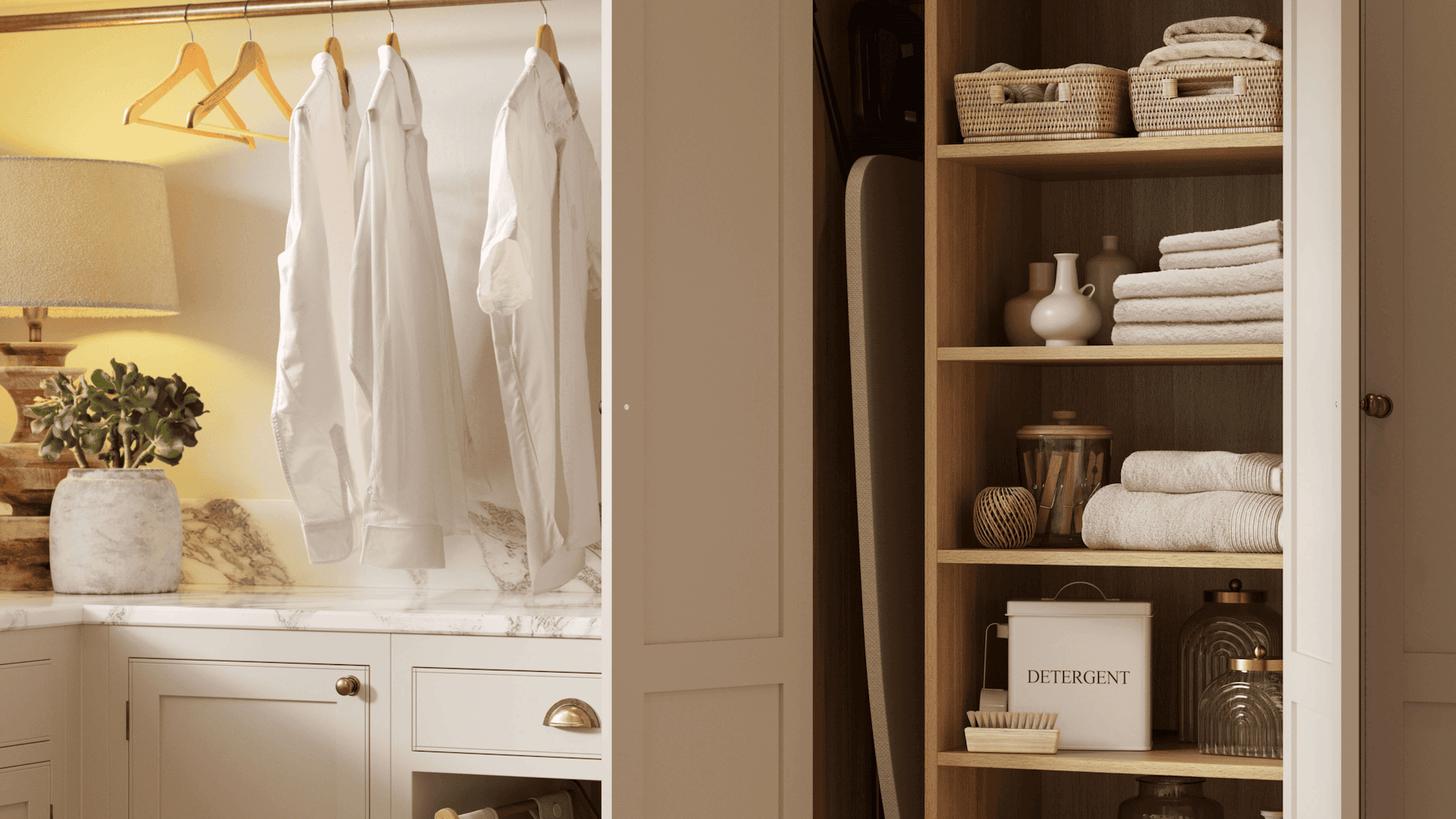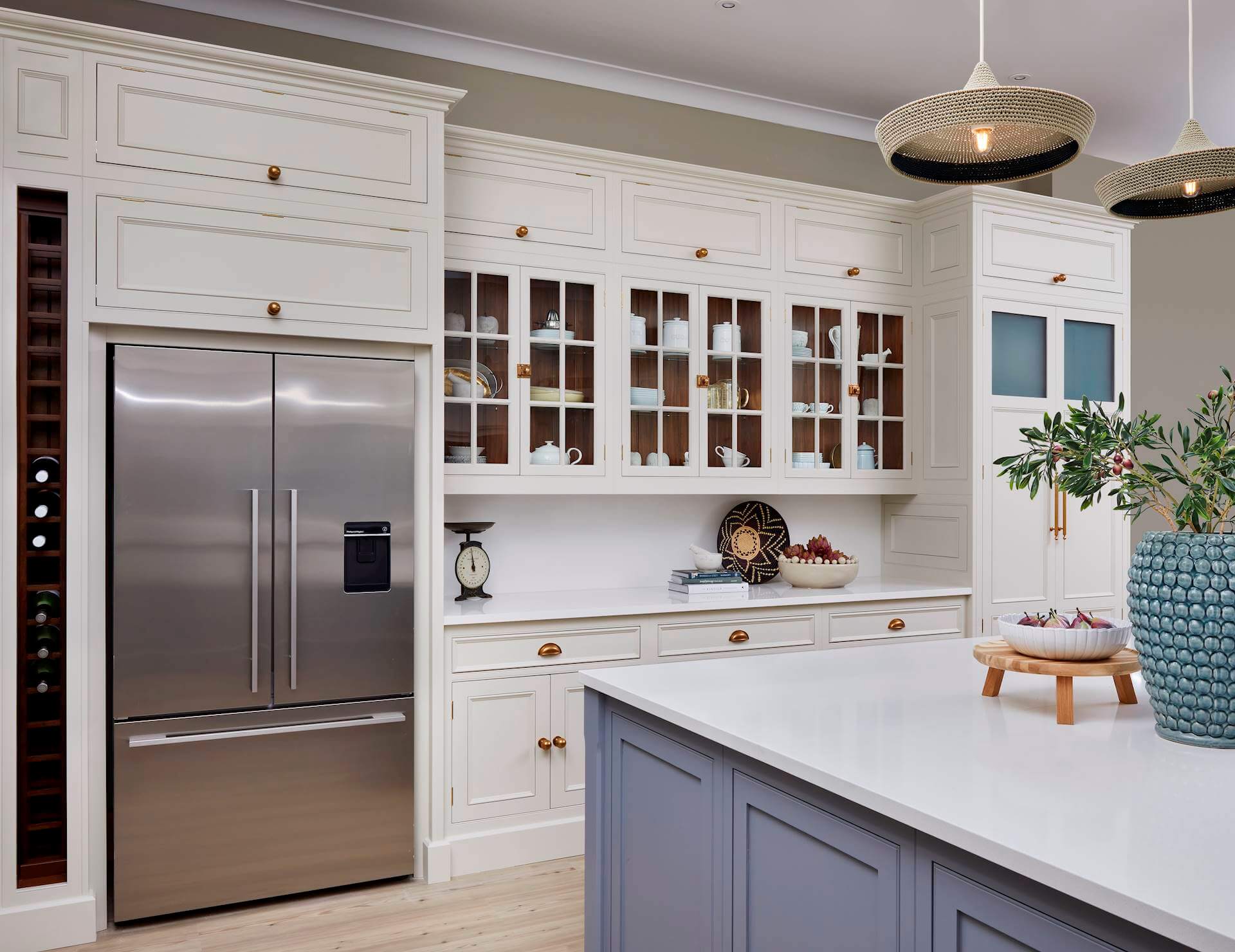
Kitchen storage is often a priority on the wish list of many homeowners. Regardless of budget, layout of style, there are many ways to add storage and create an organised scheme. From traditional cabinetry and larders to open shelving and bespoke corners, each area can be carefully thought out to maximise all space available.
Emma Cowburn, Harvey Jones Kitchen Designer, shares 5 things to consider when planning kitchen storage.
1. VERSATILE LARDERS
When it comes to planning your kitchen storage solutions, an option that often comes to mind is a larder. Larders are great, not just in large kitchens, but compact spaces too, as they take away from the need to have lots of wall cabinets, which can overcrowd the room and make it feel cramped. Not only are they good for storing food and condiments, but also for hiding away worktop appliances. You can keep your kitchen clutter-free by having sockets fitted to the inside of a larder, so that your toaster, coffee maker and blender can all be hidden and used inside the larder, ensuring your worktop is clear and tidy. If space allows, think about a walk-in larder: it will be an additional selling point to your property, whilst taking your kitchen storage to the next level.
2. FUNCTIONAL CORNERS
One of the most common issues when thinking about maximising storage in a kitchen is creating a uniform run of tall cabinets when you have worktop space left in a corner. Adding a dresser, a cabinet that sits on top of the worktop, will help ensure you do not have a dark awkward corner space and achieve a uniform look. For modern and minimalist designs, I recommend a 600mm-wide dresser to achieve a seamless look, whilst with more traditional styles, it’s worth considering larger pieces, such as 1300 or 1500mm breakfast dressers, which also lend themselves as a perfect tea or coffee making station.
3. BESPOKE SOLUTIONS
It is easy to assume that bespoke storage solutions will be the most costly option. However, with a keen eye, bespoke cabinetry can bring the whole design together more cost-effectively. Corner cabinets are often the most problematic area when planning storage. I recommend not having a fixed idea of a specific pull-out mechanism. For example, rather than using two standard cabinets, you could use one bespoke corner cabinet, saving on cabinetry, but also fitting and painting.
4. DRAWER SOCKETS
Storage can be great for hiding sockets too. For open-plan spaces in particular, I’m a big believer that the kitchen should look as much like a piece of furniture as possible, and you wouldn’t ask your electrician to add a socket to the side of your side table or bookcase! You can fit a socket to the inside of a cupboard, or use a coiled wire to fit a socket to the inside of a drawer. This creates a charging drawer that is great for keeping your kitchen clutter-free. It’s also a good idea for families that want to encourage kids to put their devices away during meal times!
5. CLEVER APPLIANCES
If you’re trying to achieve a clutter-free kitchen, there are two approaches – the first being ‘more cabinetry, more storage’, the second is to think carefully about your appliances. Including clever appliances can make your kitchen more practical and efficient, but also help you declutter the space. Adding a boiling tap means you can get rid of your kettle and if you install a food disposal unit you will no longer need a food waste caddy.
